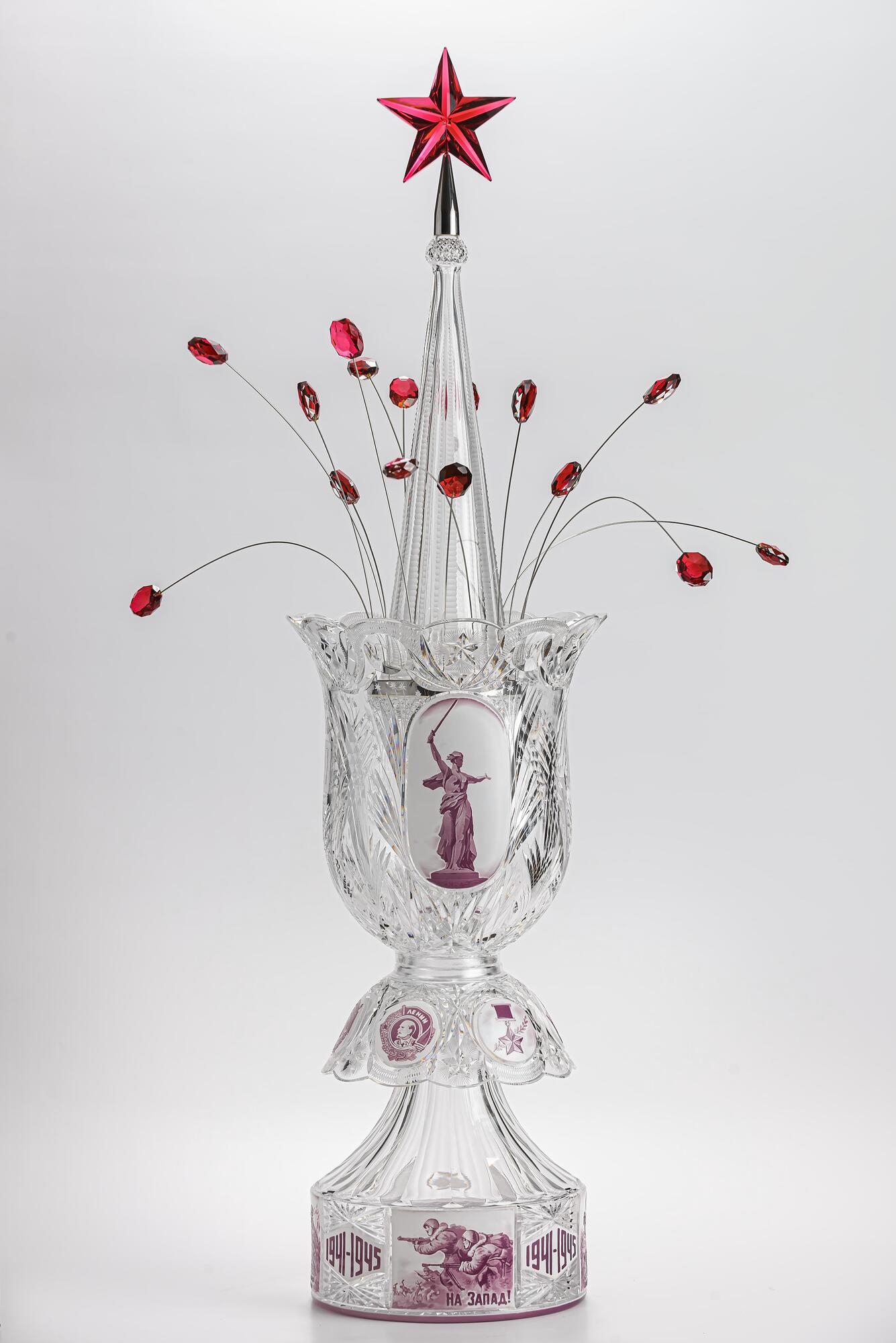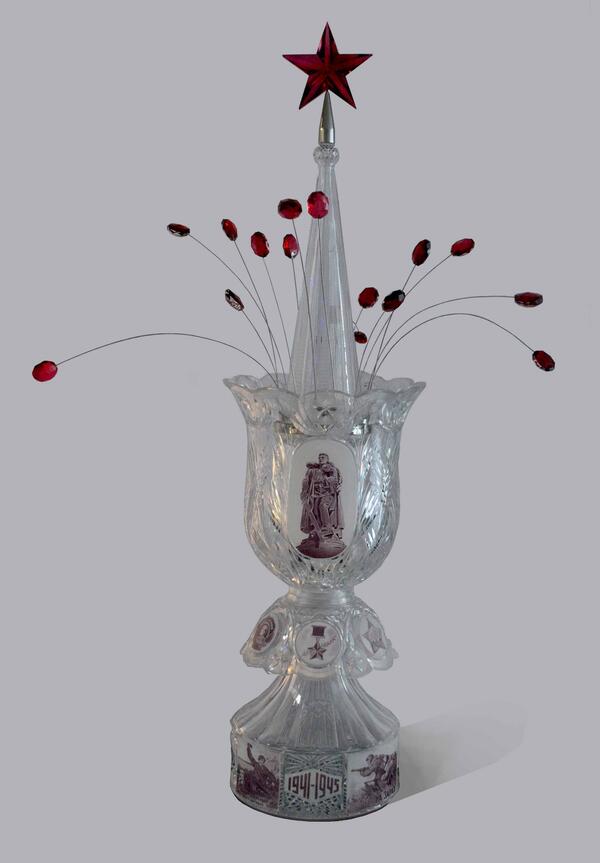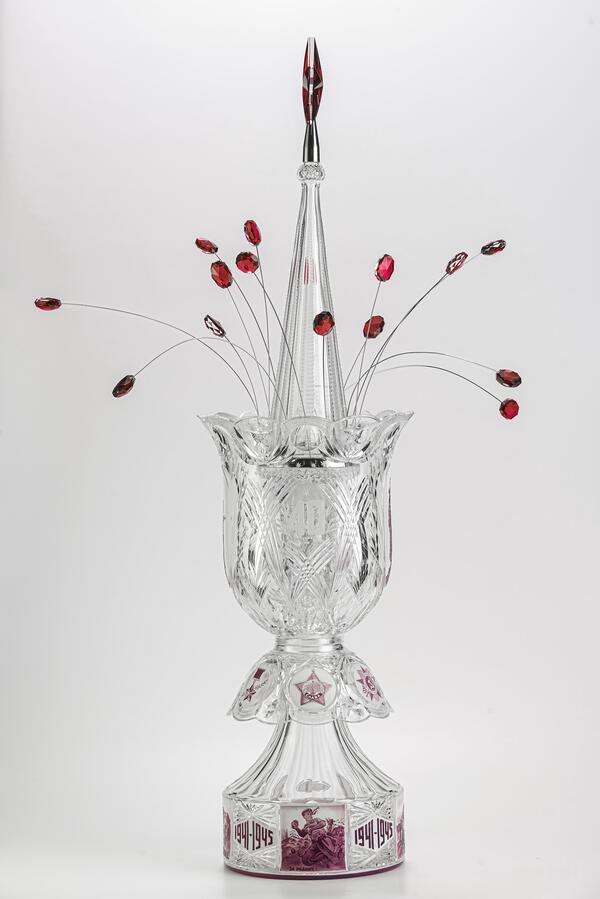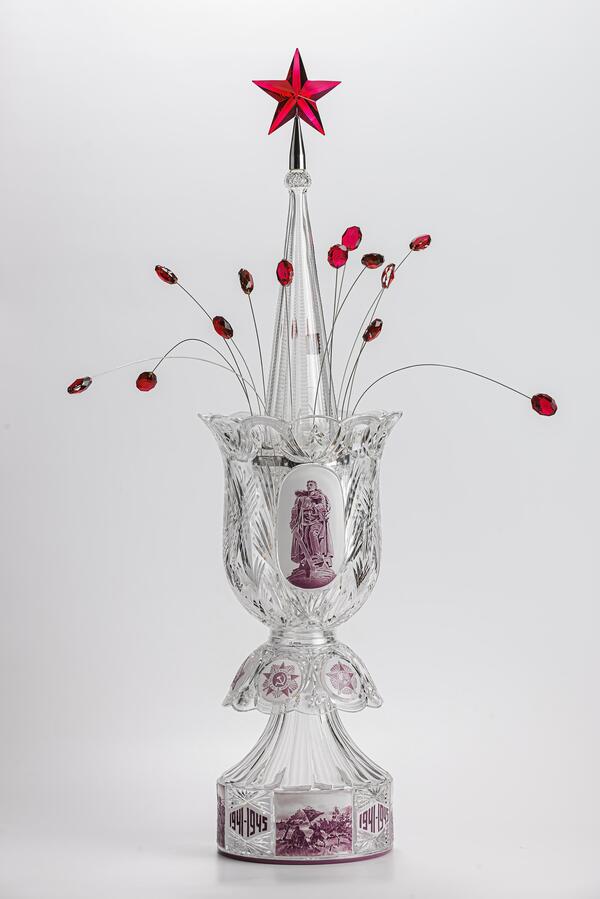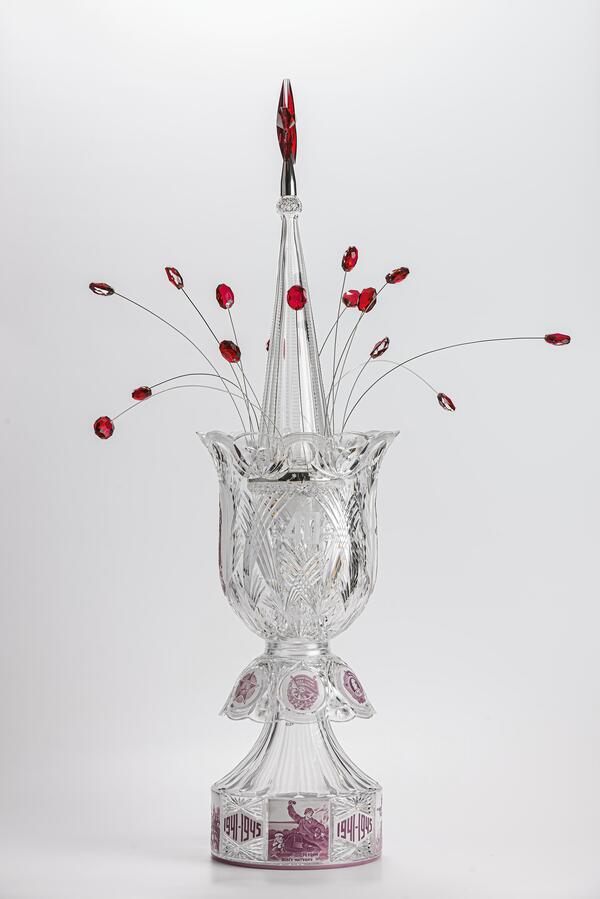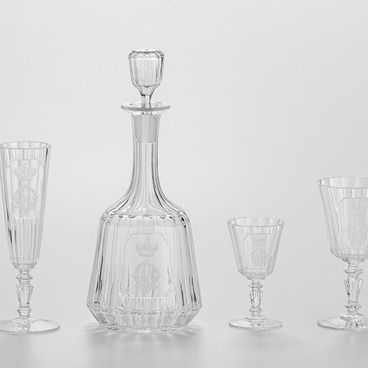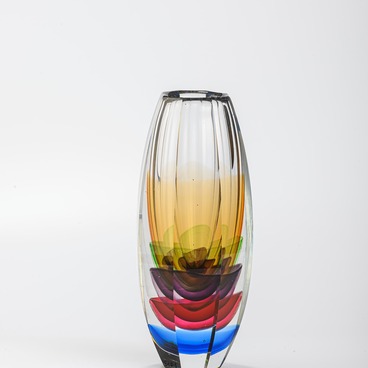Anniversary trophy cups, vases, and souvenirs dedicated to Victory Day make up a special part of the collection of the Red Giant plant. Most of them were made to commemorate the 40th anniversary of the war.
The “Fireworks” vase stands out among other memorabilia. It was manufactured by the factory craftsmen Fyodor Kovalev and Gennady Luzin. They managed to create a design with a drawing that enhanced the shape and material of the vase and lent it a certain air of refinement. The details of the design were developed by a team of glassblowers under the leadership of Alexander Mikhailovich Urazin. Gennady Vasilievich Nebaikin and Sergey Nikolaevich Yezhov performed the large cut.
The assembled vase consists of six parts; the main central part is tulip-shaped. The surface is decorated with intersecting deep notches and deep cut stars.
Purple milk glass medallions tell the story of the event that the vase was created to commemorate. The images were received after the process of deep etching. The four rectangular medallions on the lower cylindrical part of the vase feature panoramic views of the fighting and the dates “1941–1945”. Six medallions on the conical rosette depict the orders of the Great Patriotic War. The central tulip-shaped part is decorated with two large oval medallions. One of them depicts the Volgograd monument “The Motherland Calls”, while the other features the Berlin monument to the Soviet Warrior-Liberator in Treptower Park. The vase is crowned with a spire, a five-pointed star and ruby drops of festive “fireworks”. Both the star and the drops are made of gold ruby glass.
Luzin and Kovalev not only designed the vase — they also carried out the complex manufacturing process.
Gennady Konstantinovich Luzin was awarded the title of “The Best Master of Deep Cutting”. He had mastered various processing techniques, including the most complex “moiré ribbon” cut. Thanks to the deep cutting he performed, the bulky thick-walled vase “Fireworks” looks elegant and light. The deep etching performed by Fyodor Semenovich Kovalev makes the vase look especially festive. The vase is an example of clear artistic vision, refined taste and remarkable skills of glass processing.
The “Fireworks” vase stands out among other memorabilia. It was manufactured by the factory craftsmen Fyodor Kovalev and Gennady Luzin. They managed to create a design with a drawing that enhanced the shape and material of the vase and lent it a certain air of refinement. The details of the design were developed by a team of glassblowers under the leadership of Alexander Mikhailovich Urazin. Gennady Vasilievich Nebaikin and Sergey Nikolaevich Yezhov performed the large cut.
The assembled vase consists of six parts; the main central part is tulip-shaped. The surface is decorated with intersecting deep notches and deep cut stars.
Purple milk glass medallions tell the story of the event that the vase was created to commemorate. The images were received after the process of deep etching. The four rectangular medallions on the lower cylindrical part of the vase feature panoramic views of the fighting and the dates “1941–1945”. Six medallions on the conical rosette depict the orders of the Great Patriotic War. The central tulip-shaped part is decorated with two large oval medallions. One of them depicts the Volgograd monument “The Motherland Calls”, while the other features the Berlin monument to the Soviet Warrior-Liberator in Treptower Park. The vase is crowned with a spire, a five-pointed star and ruby drops of festive “fireworks”. Both the star and the drops are made of gold ruby glass.
Luzin and Kovalev not only designed the vase — they also carried out the complex manufacturing process.
Gennady Konstantinovich Luzin was awarded the title of “The Best Master of Deep Cutting”. He had mastered various processing techniques, including the most complex “moiré ribbon” cut. Thanks to the deep cutting he performed, the bulky thick-walled vase “Fireworks” looks elegant and light. The deep etching performed by Fyodor Semenovich Kovalev makes the vase look especially festive. The vase is an example of clear artistic vision, refined taste and remarkable skills of glass processing.
